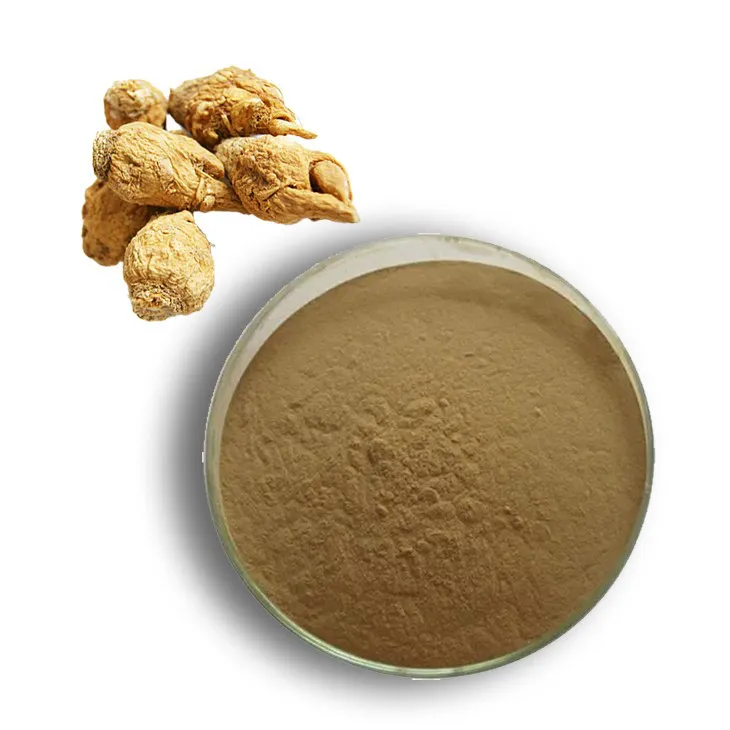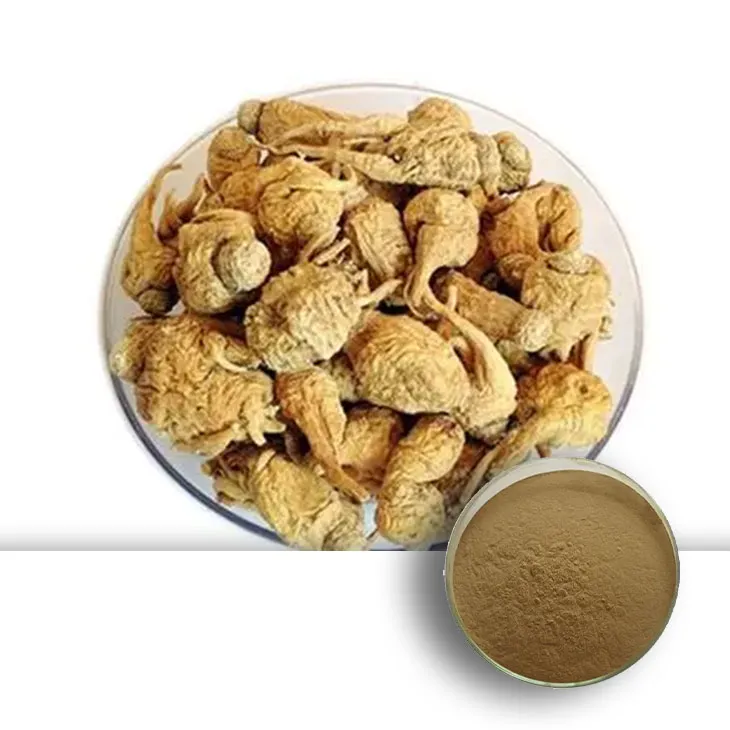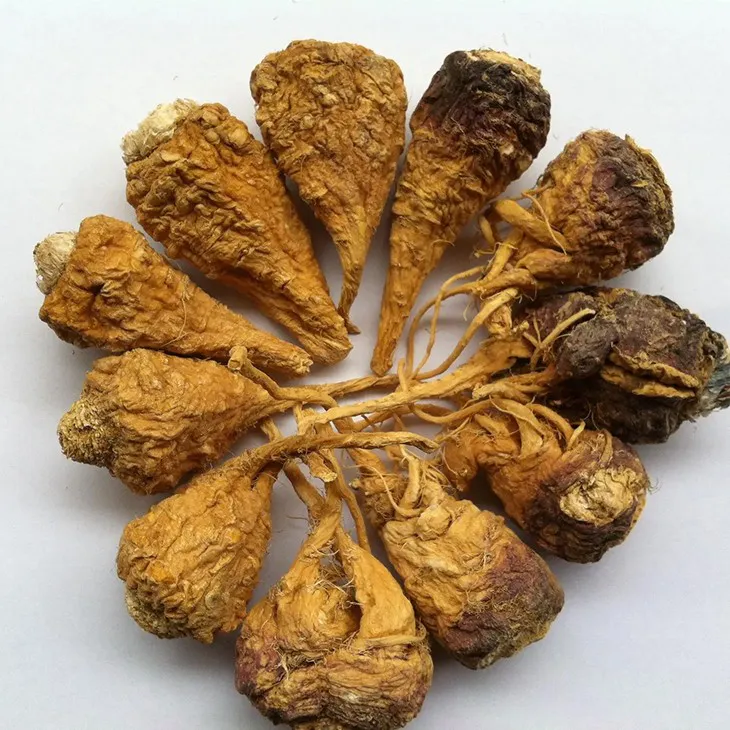- 0086-571-85302990
- sales@greenskybio.com
The process of extracting macamides from maca extract.
2024-11-29

1. Introduction
Maca, a plant native to the high altitudes of the Andes in Peru, has been gaining significant attention in recent years due to its rich nutritional and medicinal properties. Among the various bioactive compounds present in Maca, macamides are of particular interest. Macamides are a class of macamides and lipids that are believed to play important roles in various biological functions. The process of extracting macamides from Maca Extract is crucial for fully exploiting the potential of Maca resources in fields such as medicine, nutraceuticals, and health - promoting products.

2. Sourcing Maca Plants and Preparing the Extract
2.1 Sourcing Maca Plants
The first step in the process of macamide extraction is to source high - quality Maca plants. Maca plants are typically grown in specific regions with unique environmental conditions, such as the high - altitude areas of Peru. These environmental factors can influence the composition and quality of Maca, including the macamide content. Growers need to ensure proper cultivation practices to obtain Maca plants with optimal characteristics.2.2 Preparation of Maca Extract
Once the Maca plants are harvested, they need to be processed to obtain the extract. The plants are usually dried and ground into a fine powder. This powder serves as the starting material for the extraction of macamides. Different extraction methods can be employed, and the choice of method depends on various factors such as the desired yield, purity of macamides, and cost - effectiveness.
3. Initial Extraction Methods: Maceration
3.1 Principle of Maceration
Maceration is one of the commonly used initial extraction methods for macamides from Maca Extract. In this process, the Maca powder is soaked in a suitable solvent. The solvent penetrates the powder particles, dissolving the macamides and other soluble substances present in the Maca. The choice of solvent is crucial as it determines the efficiency of extraction. Solvents such as ethanol, methanol, or a mixture of polar solvents are often used due to their ability to dissolve macamides effectively.3.2 Duration and Conditions of Maceration
The Maca powder is soaked in the solvent for a certain period, which can range from a few hours to several days. The duration depends on factors such as the nature of the solvent, the particle size of the Maca powder, and the temperature. Generally, a longer maceration time may lead to a higher extraction yield, but it also increases the risk of extracting unwanted impurities. The maceration process is usually carried out at room temperature or slightly elevated temperatures to enhance the solubility of macamides.3.3 Separation of the Solvent from the Solid Residue
After the maceration period, the solvent containing the dissolved macamides and other substances needs to be separated from the solid residue. This can be achieved through filtration or centrifugation. Filtration using filter paper or a membrane filter can effectively remove the solid particles, leaving behind the solvent extract. Centrifugation can also be used to separate the liquid and solid phases more quickly, especially when dealing with larger volumes of the maceration mixture.
4. Purification of Macamides
4.1 Ion - Exchange Chromatography
After the initial extraction, the macamide - containing extract may still contain impurities. Ion - exchange chromatography is a powerful technique for purifying macamides based on their charge properties. In this method, a column is packed with an ion - exchange resin. The extract is passed through the column, and macamides with different charges interact differently with the resin. Positively charged macamides will bind to negatively charged resins, and vice versa. By adjusting the pH and ionic strength of the elution buffer, the macamides can be selectively eluted from the column, separating them from other charged impurities.4.2 Size - Exclusion Chromatography
Another purification method is size - exclusion chromatography. This technique separates macamides according to their molecular size. A column is filled with a porous gel matrix. When the extract is passed through the column, smaller molecules can penetrate the pores of the gel and are retained for a longer time, while larger molecules, such as macamides, are excluded from the pores and elute faster. This allows for the separation of macamides from smaller molecular weight impurities and other macromolecules present in the extract.5. Final Product and Its Applications
5.1 Characterization of the Purified Macamides
Once the macamides are purified, they need to be characterized to determine their chemical structure, purity, and concentration. Techniques such as high - performance liquid chromatography (HPLC), mass spectrometry (MS), and nuclear magnetic resonance (NMR) can be used for this purpose. These characterizations are important for ensuring the quality and consistency of the macamide product.5.2 Potential Applications in Medicine and Health - Promoting Products
The purified macamides obtained from Maca extract have potential applications in various fields. In medicine, macamides may have antioxidant, anti - inflammatory, and neuroprotective properties. They may also play a role in improving sexual function, although more research is needed to fully understand their mechanisms of action. In the area of health - promoting products, macamides can be incorporated into dietary supplements, functional foods, and cosmetics. For example, in dietary supplements, macamides can be added to provide additional health benefits to consumers. In cosmetics, they may have anti - aging or skin - enhancing properties.6. Conclusion
The process of extracting macamides from Maca extract involves multiple steps, from sourcing Maca plants to purifying the macamides. Each step is crucial for obtaining high - quality macamides with potential applications in medicine and health - promoting products. As research on Maca and macamides continues to progress, more efficient extraction and purification methods may be developed, further unlocking the potential of these bioactive compounds.
FAQ:
1. What are the main factors that can affect the extraction process of macamides from Maca extract?
The main factors may include the quality and variety of Maca plants, the choice of solvent for extraction, extraction time, temperature, and the type of extraction method used. Different Maca varieties may have different macamides content, and the appropriate solvent can better dissolve macamides. Longer extraction time and suitable temperature can also influence the extraction efficiency.
2. Why is column chromatography used for the purification of macamides?
Column chromatography is used because macamides need to be separated from other substances in the Maca extract. Different types of column chromatography, such as ion - exchange chromatography and size - exclusion chromatography, can take advantage of the different properties of macamides, like their charge and molecular size respectively, to achieve effective purification.
3. What are the potential applications of the purified macamides?
The purified macamides can be studied for their biological activities. In the fields of medicine, they may have potential in drug development, for example, as ingredients with certain physiological regulation functions. In health - promoting products, macamides can be added to products like dietary supplements to provide health - related benefits.
4. How does maceration contribute to the extraction of macamides?
Maceration helps to dissolve macamides from Maca powder into the solvent. By soaking Maca powder in a suitable solvent for a period of time, macamides can be gradually transferred from the solid powder into the liquid solvent, along with other soluble substances. This makes it possible to separate macamides from the solid residue in the subsequent step.
5. Are there any limitations in the current process of extracting macamides from Maca extract?
Yes, there are limitations. One limitation could be the cost of the extraction and purification process. The use of column chromatography and high - quality solvents may be expensive. Also, the extraction efficiency may not be 100% and some macamides may be lost during the process. Moreover, ensuring the purity of macamides without introducing impurities during the complex extraction and purification steps can also be a challenge.
Related literature
- Title: Advances in Maca Research: Extraction and Analysis of Bioactive Compounds"
- Title: "Maca Extract: From Extraction to Potential Health Benefits"
- Title: "Optimization of the Extraction Process of Macamides from Maca"
- ▶ Hesperidin
- ▶ citrus bioflavonoids
- ▶ plant extract
- ▶ lycopene
- ▶ Diosmin
- ▶ Grape seed extract
- ▶ Sea buckthorn Juice Powder
- ▶ Beetroot powder
- ▶ Hops Extract
- ▶ Artichoke Extract
- ▶ Reishi mushroom extract
- ▶ Astaxanthin
- ▶ Green Tea Extract
- ▶ Curcumin Extract
- ▶ Horse Chestnut Extract
- ▶ Other Problems
- ▶ Boswellia Serrata Extract
- ▶ Resveratrol Extract
- ▶ Marigold Extract
- ▶ Grape Leaf Extract
- ▶ blog3
- ▶ blog4
-
Nature's best β - carotene.
2024-11-29
-
Standard - process Coenzyme Q10.
2024-11-29
-
Bulk purchase of pomegranate extract.
2024-11-29
-
Extraction process of bilberry extract.
2024-11-29
-
Manufacturers of Euphrasia Extract.
2024-11-29
-
Chinese peppermint oil powder factories.
2024-11-29
-
Red Date Extract
2024-11-29
-
Green Tea Extract
2024-11-29
-
Tormentil Extract
2024-11-29
-
Konjac Powder
2024-11-29
-
Hawthorn Extract
2024-11-29
-
Selenium yeast
2024-11-29
-
Saponin Extract
2024-11-29
-
Artichoke Extract
2024-11-29
-
Dan Shen Root Extract/Salvia Root Extract
2024-11-29
-
Stevia Extract
2024-11-29





















